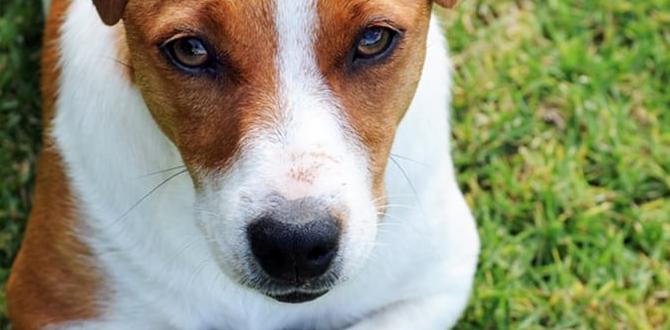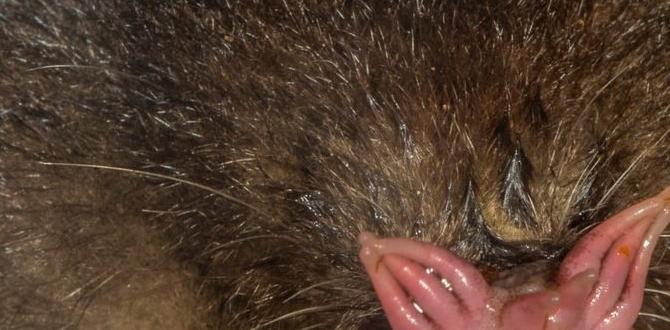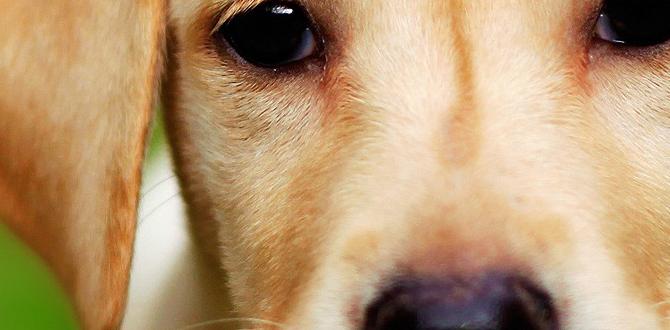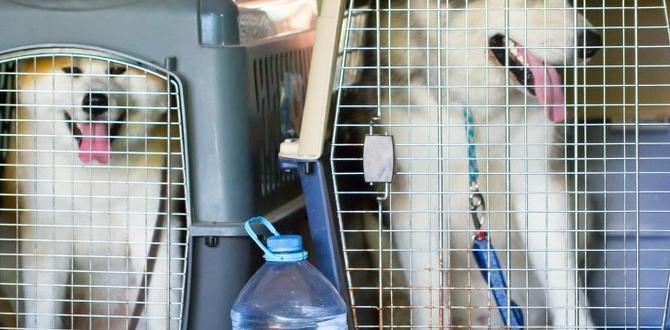Do you have a dog that sometimes misbehaves? You’re not alone! Many dog owners face this challenge. Dogs can be playful, curious, and sometimes a bit naughty. But did you know you can correct dog misbehavior naturally? Yes, you can teach your furry friend good habits without using harsh methods. Let’s explore how you can make your dog’s life, and yours, better.
Key Takeaways
- Use positive reinforcement to encourage good behavior.
- Understand why your dog misbehaves.
- Correct dog misbehavior naturally with consistent training.
- Exercise can reduce hyperactivity in dogs.
- Ensure a balanced diet for your pet.
Positive Reinforcement Training
Positive reinforcement is a great way to correct dog misbehavior naturally. It involves rewarding your dog for good behavior. This method encourages them to repeat the action. For example, if your dog sits on command, give them a treat or a pat. They will associate sitting with something pleasant. Over time, they will do it without a reward. Remember, patience is key. Dogs learn at their own pace, so give them time.
- Use treats as rewards.
- Praise your dog with words.
- Playtime can be a reward.
- Keep training sessions short.
- Be consistent with your commands.
- Use a cheerful voice when praising.
Positive reinforcement works best when you know your dog’s favorite things. Some dogs love belly rubs, while others prefer a squeaky toy. Find out what makes your dog wag their tail. Use it as a reward to encourage good behavior. Always remember, the goal is a happy, well-behaved dog.
Fun Fact or Stats : Did you know that dogs can understand up to 165 words and gestures?
What Is Positive Reinforcement?
Have you ever received a gold star for a job well done? That’s a simple form of positive reinforcement! For dogs, positive reinforcement means rewarding them for good behavior. This can be with treats, praise, or playtime. It’s an effective method to teach your dog new commands. Imagine you teach your dog to fetch a ball. Each time they bring it back, you give them a treat. They quickly learn to love fetching! Positive reinforcement makes training fun for both you and your dog.
How To Use Treats Effectively?
Do you know how to use treats wisely? Treats are a powerful tool in training. Start with small, tasty treats. You want your dog to stay focused, not get full! Use treats to reward good behavior immediately. Timing is important. If your dog sits, give them a treat right away. This helps them connect the behavior with the reward. Don’t overdo it, though. Too many treats can lead to weight gain. Balance is key in using treats effectively.
Praising Your Dog
Does your dog love hearing “Good boy” or “Good girl”? Most dogs do! Praising is another way to use positive reinforcement. Use a happy, upbeat voice when your dog follows commands. This makes them feel loved and appreciated. Combine praise with treats for the best results. Your dog will understand that they did something right. Over time, praise alone can motivate your dog to behave well. Words and affection are powerful tools in your training kit.
Understanding Dog Behavior
To correct dog misbehavior naturally, it’s important to understand why they misbehave. Dogs misbehave for many reasons. It could be boredom, lack of exercise, or simply needing attention. Sometimes, they don’t understand what you expect from them. Pay attention to when and why your dog misbehaves. This helps you find the right solution. Every dog is different, and so are their reasons for behaving badly. Being observant is the first step to a well-behaved dog.
- Observe your dog’s behavior regularly.
- Identify triggers of bad behavior.
- Note changes in their routine.
- Consider their environment.
- Check if they have enough toys.
- Spend quality time with them.
- Consult a vet if unsure.
Understanding your dog is like solving a puzzle. Keep an eye on their daily activities. What makes them happy or upset? Are they acting out for attention? Once you figure out the pieces, you can help them behave better. Remember, knowing your dog’s behavior helps you train them more effectively.
Fun Fact or Stats : Dogs have about 100,000 times more sensitive noses than humans!
Why Do Dogs Misbehave?
Ever wonder why your dog chews on shoes or barks a lot? Dogs misbehave for many reasons. Sometimes, they’re bored and need more playtime. Other times, they are anxious or scared. Lack of training can also be a reason. Dogs can’t talk, but they communicate in different ways. Chewing or barking could be their way of telling you something. Understanding the ‘why’ helps you address the issue better.
Signs of Stress in Dogs
Can you tell when your dog is stressed? Stress can lead to misbehavior. Look for signs like panting, pacing, or whining. Is your dog hiding or showing aggression? These could be stress signals. Dogs might also lick their lips or yawn a lot when stressed. Knowing these signs helps you understand your dog’s needs. Reducing stress can lead to better behavior.
Triggers of Bad Behavior
What triggers your dog’s bad behavior? It could be a loud noise or a new face in the house. Some dogs may react to changes in their environment. Others might not like being left alone for too long. Identify these triggers to help your dog cope better. This can make a big difference in their behavior. Helping your dog feel more comfortable can reduce misbehavior.
Exercise and Playtime
Exercise and playtime are crucial for your dog’s well-being. Dogs need daily activity to stay healthy and happy. Lack of exercise can lead to hyperactivity and misbehavior. A simple walk or game of fetch can work wonders. It burns off excess energy and keeps their mind sharp. Regular playtime also strengthens your bond with your dog. It’s a chance for both of you to have fun and enjoy each other’s company.
- Walk your dog daily.
- Play fetch or tug-of-war.
- Use puzzle toys for mental exercise.
- Allow off-leash time in safe areas.
- Teach new tricks during play.
- Join dog sports or agility classes.
Exercise is not just about physical activity. It also stimulates their brain. Puzzle toys and games like hide and seek challenge their minds. This helps reduce boredom and bad behavior. Try to vary your dog’s activities. It keeps things exciting for them. Remember, a tired dog is often a well-behaved dog. Make exercise a fun daily routine for both of you.
Fun Fact or Stats : Dogs can run up to 20 miles per hour on average!
Importance of Daily Exercise
Why should dogs exercise daily? Exercise is vital for their health and happiness. It helps burn off extra energy that can lead to misbehavior. A good walk or play session keeps them fit and healthy. It also helps control their weight. Exercise reduces the risk of diseases and improves their mood. A happy dog is less likely to misbehave. Make daily exercise a fun and rewarding routine for your dog.
Best Games for Dogs
What games do dogs love? Dogs enjoy games that challenge them. Fetch and tug-of-war are popular choices. These games provide physical and mental stimulation. Hide and seek is another great game. It helps dogs use their nose and brain. Puzzle toys are excellent for brain work. They keep dogs occupied and entertained. Rotate games to keep your dog excited and engaged.
How Much Exercise Is Enough?
Do you know how much exercise your dog needs? Different dogs have different exercise needs. A small dog might need less exercise than a larger breed. Age also plays a role. Puppies and young dogs usually require more playtime. Older dogs may prefer shorter, gentler walks. Pay attention to your dog’s energy level. Adjust their exercise routine accordingly. A well-exercised dog is usually a happy and well-behaved one.
Balanced Diet and Nutrition
A balanced diet is crucial for your dog’s health. Proper nutrition can influence their behavior positively. Dogs need the right amount of proteins, fats, and carbohydrates. Vitamins and minerals are also important. A well-fed dog is less likely to show signs of misbehavior. Poor diet can lead to health issues and mood swings. Make sure your dog eats high-quality food. Consult your vet for the best diet plan for your furry friend.
- Provide high-quality dog food.
- Include proteins for muscle health.
- Balanced fats for energy.
- Carbs for vitality and strength.
- Vitamins and minerals for immunity.
Choosing the right food takes some research. Look at the ingredients and nutritional content. Avoid food with too many preservatives or additives. Sometimes, food allergies can affect behavior. If you notice changes, consult your vet. They can recommend the best options tailored to your dog’s needs. A healthy diet is a simple way to promote good behavior naturally.
Fun Fact or Stats : Dogs have about 1,700 taste buds compared to humans’ 9,000!
Why Nutrition Matters
Why is nutrition important for dogs? Just like us, dogs need a balanced diet to thrive. Good nutrition supports their growth and health. It affects their behavior, too. Lack of nutrients can lead to restlessness or lethargy. A proper diet keeps their energy levels steady. Healthy food choices can make training easier. A well-nourished dog is usually happier and more obedient.
Choosing the Right Dog Food
How do you pick the best food for your dog? Start by checking the label. Look for complete and balanced food. This means it has all the nutrients your dog needs. Avoid foods with too many fillers. Choose a brand that suits your dog’s age and size. Puppies, adults, and seniors have different dietary needs. Consult your vet if you’re unsure. They can help you make the best choice for your furry friend.
Homemade vs. Store-Bought
Is homemade food better than store-bought? It depends on what’s in it. Homemade food lets you control the ingredients. You can ensure high quality and freshness. However, it must be well-balanced. Store-bought food is convenient and meets nutritional guidelines. Some dogs may prefer one over the other. Observe your dog’s reaction to their diet. Choose what works best for their health and well-being.
Consistency in Training
Consistency is key when training your dog. Dogs learn best with clear, repeated signals. Mixed messages can confuse them. Stick to the same commands and routines. This helps your dog understand what you expect. Everyone in the family should be on the same page. If one person says “sit” and another uses “down,” it confuses your dog. Consistent training builds trust and strengthens your bond.
- Use the same words for commands.
- Practice commands daily.
- Keep training sessions short but frequent.
- Reward good behavior every time.
- Be patient and don’t rush progress.
Training is a journey, not a race. Make it fun and rewarding for both you and your dog. Consistency can be challenging at first. But with practice, it becomes second nature. Over time, your dog will respond better to your commands. This leads to a happier, more obedient pet. Remember, good training is about building a relationship with your dog.
Fun Fact or Stats : Puppies can learn commands as early as eight weeks old!
Why Consistency Matters
Ever wonder why some dogs listen well and others don’t? Consistency makes a big difference. Dogs thrive on routine and clear communication. Consistent training helps them understand what’s expected. If you say “sit” and your dog gets a treat, they learn to sit for treats. Changing commands or routines confuses them. Consistency helps your dog learn faster and behave better.
Setting a Training Routine
How do you set a training routine? Start with short, daily sessions. Focus on one command at a time. Practice in a quiet place without distractions. Gradually increase the difficulty as your dog learns. Be patient and keep it positive. Training routines help your dog know what to expect. It builds their confidence and yours, too!
Involving the Family
How important is family involvement in training? Very important! Everyone in the family should use the same commands. Consistency from all family members helps your dog learn quicker. It prevents confusion and builds a stronger bond. Share the training duties. It’s a fun way for everyone to connect with your dog. A well-trained dog is a happy family member.
Professional Help and Resources
Sometimes, correcting dog misbehavior naturally may require extra help. Professional trainers can offer guidance and support. They have experience with different breeds and behaviors. Trainers can teach you and your dog new skills. They observe your dog and suggest personalized solutions. Online resources like videos and books can also help. Many trainers offer online classes, too. There’s no shame in seeking help. It can make training more effective and enjoyable.
- Consult a professional dog trainer.
- Join training classes or workshops.
- Use online videos for guidance.
- Read books about dog training.
- Join dog owner communities for support.
Professional help can be beneficial for both you and your dog. Trainers have techniques that can solve specific issues. They can also boost your confidence as a dog owner. Online resources provide flexibility and a wealth of information. Books and videos offer tips and tricks to try at home. Combining these resources with your own efforts can lead to great results.
Fun Fact or Stats : Dog trainers use over 100 different techniques to teach dogs!
When to Seek Professional Help
Do you know when it’s time to call a professional? If your dog’s behavior doesn’t improve, seek expert help. Aggression, anxiety, or fear might need special attention. A trainer can assess and create a plan for your dog. They offer hands-on instruction and personalized advice. Professional help can make training more efficient. It’s a worthwhile investment for a happy, well-behaved dog.
Finding the Right Trainer
How do you find the best trainer for your dog? Look for trainers with good reviews and experience. Ask for recommendations from other dog owners. Meet with the trainer first. Discuss your dog’s needs and your goals. A good trainer listens and provides clear guidance. They should use positive methods and show patience. Choose someone who connects well with both you and your dog.
Online Resources for Dog Owners
Where can you find online help for dog training? There are many websites and videos available. Some offer free tips, while others provide paid courses. Online resources are convenient and flexible. You can learn at your own pace. Join forums or groups for support. Share experiences and get advice from other dog owners. Online resources can complement your training efforts effectively.
Conclusion
Correcting dog misbehavior naturally is possible with patience and love. Use positive reinforcement, understand your dog, and ensure a balanced lifestyle. Exercise, diet, and consistency play key roles in training. If needed, seek professional help for better results. With these tips, you can enjoy a happy life with your dog.
FAQs
Question: How can I correct dog misbehavior naturally?
Answer: Use positive reinforcement, exercise, and a balanced diet. Understand your dog’s needs and behavior. Consistent training helps correct misbehavior naturally.
Question: What is positive reinforcement?
Answer: Positive reinforcement involves rewarding your dog for good behavior. This encourages them to repeat the action. Rewards can be treats, praise, or playtime.
Question: Why does my dog misbehave?
Answer: Dogs misbehave for many reasons like boredom, lack of exercise, or attention needs. Understanding their behavior helps address the root cause effectively.
Question: How important is consistency in training?
Answer: Consistency is crucial for successful training. It helps your dog understand what’s expected and reduces confusion. Use the same commands and routines for best results.
Question: Should I seek professional help for training?
Answer: Yes, if your dog’s behavior doesn’t improve with your efforts. A professional can offer personalized guidance and solutions. It’s a good investment for lasting results.
Question: Can diet affect my dog’s behavior?
Answer: Yes, a balanced diet impacts your dog’s mood and energy levels. Proper nutrition supports good behavior and overall health
Meet Elyse Colburn, the devoted canine companion and storyteller behind the enchanting world of “Tales, Tails, and Adventures Unleashed.” A passionate dog enthusiast with a heart full of paw prints, Elyse Colburn shares heartwarming tales and insightful adventures, celebrating the joy, loyalty, and endless antics that make every dog a true hero. Join Elyse Colburn on this tail-wagging journey, where every post is a love letter to our four-legged friends.








